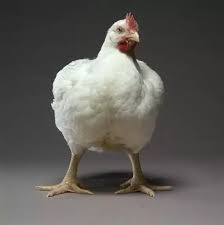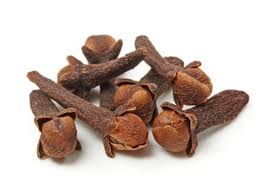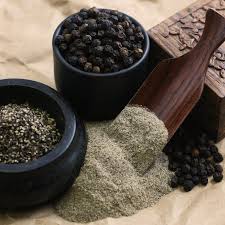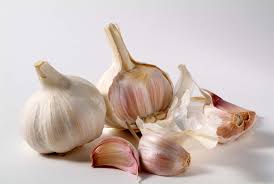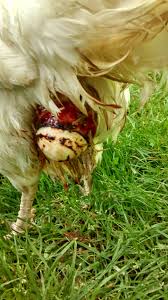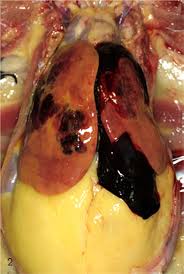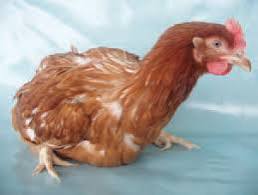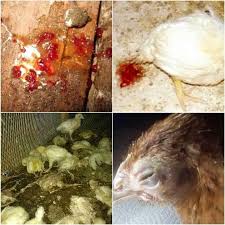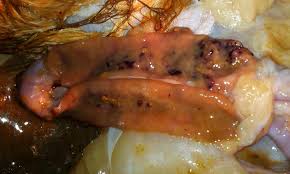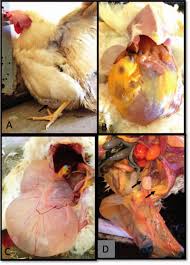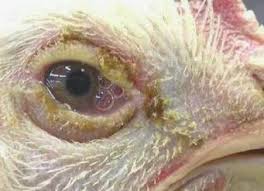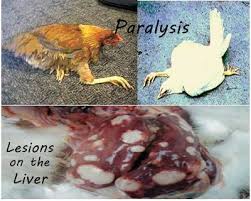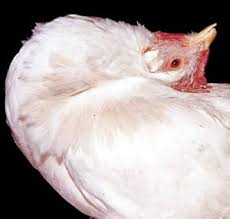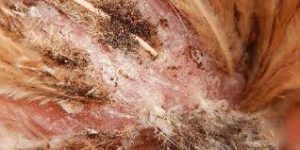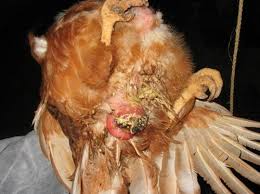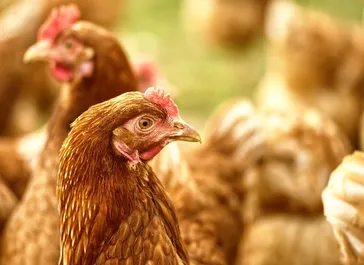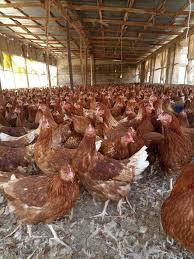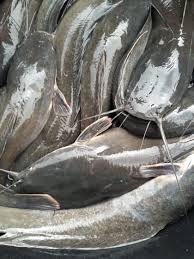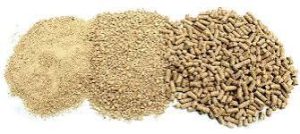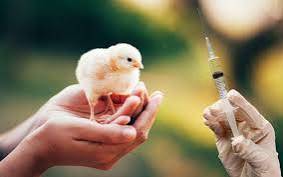The first step to Protecting yourself and your family from poultry diseases that affect humans start with having the knowledge of the zoonotic disease.
Zoonotic diseases which is also called Zoonoses are infectious diseases that can be transmitted from animals to human.
Poultry farming is one of the most lucrative, most popular farming business ventures. It is capable of providing an alternative source of income.
So many would-be farmers or already established farmers that are very excited about poultry farming are not even aware of the fact that their feathered friends or business partners (chickens ducks, guinea fowl, geese, etc).
Even infected egg can also be a source of transmitting infectious poultry diseases that affect humans. These could be life-threatening if prompt action is not taken.
THE FOLLOWING INFECTIOUS POULTRY DISEASES THAT AFFECT HUMANS CAN BE TRANSMITTED FROM POULTRY TO HUMANS IF PRECAUTIONARY MEASURES ARE NOT TAKEN:
1. SALMONELLA, A POULTRY DISEASE THAT AFFECTS HUMANS.
It is a common bacterial infection that can be found in poultry birds like (chicken, duck, geese, etc.). Humans can get infected if proper care is not taking in handling those beautiful looking birds.
You can be infected by coming in contact with their droppings.
From eating eggs that are not well cooked.
Not washing hands properly after feeding or taking care of your birds. It is expected that before eating. You wash your hands with a sanitizer or good toilet soup so as not to be infected with salmonella.
It can cause an infected person to suffer from fever, vomiting, diarrhea. And abdominal cramps lasting for several days.
Hardly you find a farm that has no history of salmonella infection. Though if proper medical attention is given.
It is not a life-threatening poultry disease that affects humans. But cases of death have been reported in some quarters where it is treated with levity.
2.RESPIRATORY HAZARDS
As a poultry farmer, you could be exposed to a whole lot of respiratory hazards. As a result of many activities that go on in your farm as follows:
Laying down beddings as in the case of deep litter system.
When removing builds up litter either to be transported to the farm or selling it out to other farmers to be used as farm manure.
Routine cobweb removal in the farmhouse. And general farm cleaning especially when bringing in new flock.
Catching poultry for slaughter or sale. These could be an avenue of transmitting poultry diseases that affect humans.
During vaccination of bird’s i.e vaccination that involves wind web or subcutaneous injection that involves holding and catching.
When feeding your birds especially in a deep litter system. As a result of your birds becoming excited, they could raise some dust.
All these activities are capable of causing severe respiratory or breathing problems. Thereby transmitting poultry disease that affects humans to the farmworkers.
These could result in the following health challenged
Coughing
Shortness of breath chest tightness.
Throat discomfort etc.
Wherever poultry feeds are stored they will always attract rodents such as rats, mice that feed on chicken feed. And as a result, they, in turn, will attract other predators that feed on them (food chain).
These predators are also very harmful to both chickens and humans as well, predators such as snakes that are very venomous and life-threatening.
Emission of toxic gases like ammonia from the litter that is badly manage could pose a serious health risk to chickens and humans as well. This scenario could lead to the transmission of poultry disease that affects humans.
It is capable of weakening the immunity of chickens and their ability to resist diseases.
It can produce a choking effect on humans which is also not too good for the respiratory tract of humans.
3. AVIAN INFLUENZA (BIRD FLU) IS A DEVASTATING POULTRY DISEASE THAT AFFECTS HUMANS TOO
Avian influenza is a public health hazard, which is associated with urban and large scale chicken farming.
Birds can shed the organism in the saliva, nasal secretions, and feces. Avian influenza is a viral infection.
It is very difficult to treat viral infections, unlike bacterial infections that can be treated with some prescription of antibiotics drugs by the doctor.
That’s the more reason why extreme care must be taken in preventing this poultry disease that affects humans.
This poultry disease that affect humans is contagious to humans through exposure to respiratory or fecal secretions. The risk of avian influenza is increasingly becoming limited. And highly restricted to those who are exposed to infected chickens.
4. CAMPYLOBACTERIOSIS
Campylobacter is a bacterial poultry disease that infects humans through contacts with infected or contaminated food, meat, egg, etc. It can also be spread through the droppings of infected animals.
Unfortunately, it is often difficult to predict the risk of campylobacter from infected animals. Especially backyard poultry that can carry the bacteria without any visible sign of illness.
Contamination can occur during processing, especially in large scale industrial poultry productions. It can also be spread as earlier stated through:
Contaminated food.
Infected meat and eggs.
Droppings of infected birds or animals.
As stated earlier illness in chickens is uncommon but can also occur in humans the following symptoms are visible seen:
Nausea vomiting and fever
Abdominal pain
Diarrhea, cramping,
5. E.COLI (ESCHERICHIA COLI)
E-Coli is probably the best known of all food poisoning germs associated with poultry birds. Most strains of E.coli are harmless. Though some can make you sick.
We all have E. coli living in our intestine where it is safely contained and helping our body to break down food.
When found in the wrong place, where it is not needed then it becomes a problem and can course suffering to the infected person
Common ways humans are infected are by consuming food prepared improperly or lack of hand washing after handling or working in a chicken house.
In humans, some strains of E. coli can cause diarrhea, while others can cause urinary tract infections, respiratory illnesses, and pneumonia.
As poultry farm owner you need to make deliberate efforts to safeguard the health, safety and well being of your farmworkers.
As workers on the farm, we need to fashion out ways to protect our health and life against many diseases and hazards on the farm.
THE FOLLOWING SAFETY MEASURES WILL PROTECT YOU AGAINST RESPIRATORY INFECTIONS ASSOCIATED WITH POULTRY DISEASE THAT AFFECT HUMANS.
Wear your respiratory protective equipment such as dusk mask, helmets, air fed hood, etc.
Turn your litter once or twice a week, and add fresh litter to the existing one to form compost. To allow action of good bacteria to work on the compost. It will also reduce the incidence of built-up ammonia gas. Ammonia is very dangerous to chickens. It weakens their immune system and also courses a choking effect on humans.
And always put on your protective glasses, to protect your eyes from dust particles. And other dust particles that may be flying around and can cause injury to the eye.
Follow all safety measures laid down by your employer to protect yourself. Always put on safety equipment’s when you are on the farm. And follow strictly the manufacturer’s instructions on how to use them properly.
When cleaning your chicken coop preparing for brooding new flock of chicks. It is advisable to sprinkle water on the floors to reduce dust particles in the atmosphere. It will reduce considerably the amount of dust in the atmosphere.
HOW TO PROTECT YOURSELF FROM POULTRY DISEASE THAT AFFECTS HUMANS WHEN HANDLING BIRDS AND OTHER POULTRY PRODUCTS SUCH AS EGGS.
Eggs can transmit salmonella too. You are strongly advised to wash your hand with soap and water thoroughly after handling eggs to avoid been infected.
Do not allow your eggs to stay too long in their nest. Pick them as soon as your chicken lays them to avoid breakage and crack eggs. Broken and cracked eggs should be thrown away because there is the possibility that bacteria may find their way into the eggs. These can be a medium for the transmission of bacterial infection.
Do not be quick to wash eggs instead of refrigerating them. Both to maintain their freshness and slow down bacterial growth and spread.
To prevent poultry diseases that affect humans. Strive to provide a good nesting place for your laying hens. To discourage floor eggs, dirty and soiled eggs.
Avoid eating uncooked eggs it may contain salmonella bacteria that can make you sick. Eggs should always be properly cooked before eating.
Eggs should be collected frequently as soon as they are laid by the chicken. Eggs that spend too much time before collecting can get cracked and become dirty both are not good for your health. They are capable of transmitting poultry diseases that affect humans.
Wash your hands with soap after collecting eggs from the nest or cage. To avoid been infected with a bacterial infection.
OTHER GENERAL PREVENTIVE MEASURES AGAINST POULTRY DISEASES THAT AFFECT HUMANS AS IT RELATES TO YOUR HEALTH.
Always wash your hands thoroughly with soap and water after handling chicken. And other poultry equipment’s especially after feeding and providing water to your chickens. Cultivate the habit of washing your hands especially before eating food.
Endeavor to used antibiotics prescribed by a qualified veterinary doctor. To avoid indiscriminate use of antibiotics that might lead to antibiotics resistance in both chickens and humans.
Damp or wet litter should always be removed and replaced immediately with dry and good litter. Especially during wet weather conditions, bacteria usually find it easier to thrive in this condition.
Eating side by side with chicken should be avoided or eating inside the chicken coop, should be avoided at all costs.
Have separate clothing for entering and doing your farm work. These will help in reducing poultry diseases that affect humans.
Efforts should be made to keep it clean at all times. Separate shoes should be provided also for entering the chicken house. And should always be kept at the farmhouse to avoid bringing bacteria back home.
Avoiding bringing children below the age of 7 into the poultry farm or those with a fragile immunity system. To avoid been infected by harmful bacteria in the chicken coop.
Compost your manure properly if you intend to use it in your garden. Turn it regularly, and add fresh litter to it. To keep it always healthy to avoid molds from forming. Molds are capable of coursing transmittable diseases to both chickens and humans.
Try as much as possible to keep away rodents especially rats from your chicken coop. And most especially where you keep your chicken feed. Studies have shown that they also transmit some poultry diseases that affect humans.
Death, decay carcasses of death poultry chickens should be properly disposed of far away from human habitation. And also far away from where poultry house is located. To avoid the incidence of bacterial related illnesses in the community.
CONCLUSION
In as much as you want to succeed in your farming venture, and you are very passionate about your flock. You have a very important obligation to keep, your health should never be taken for granted and should be guarded jealously.
You have to be alive to succeed in your farming venture, not just to be alive you have to be in good health.
All the safety precautions and health tips explained and mentioned above. Should be adhered to strictly to protect yourself from poultry diseases that affect humans.
Rodents and parasites that cause sickness should also be prevented from settling down within your farm property. And where you keep your chicken feed, they are also carriers of these diseases that can cause us a lot of pain and trouble.
Be mindful of your health whenever you feed or interact with your birds. Health is wealth and should be your priority. You have to do anything within your powers to remain healthy, never compromise your health.
Always adhere strictly to all the safety rules as it affects human health, putting in mind the health of yourself and your family.
So that happily together you can grow a healthy and successful poultry enterprise.
Get your updated by clicking Here to join our WhatsApp group


